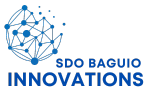Project LIPAT Dunong
ROMMEL L. MANZANO
School Head
Proponent
Project LIPAT-Dunong:
Learning
Inclusive Education through
Partnership,
Accessibility and
Teacher Engagement
The Problem
The significant gap in knowledge, skills and training among general education teachers remain a major obstacle to effective implementation of inclusive education. Regular school teachers lack the necessary skills and understanding to accommodate learners with special needs.
The Context
In the Philippines, 15 million out of 1OO million Filipino children, youth and adults have disabilities (WHO, 2011). 3.3 million of this population are in schools (UNICEF, 2016).
These learners with disabilities experience barriers and various challenges that hinder their full access to and participation in the Basic Education due to the lack of skills and knowledge of teachers in the regular schools.
Stakeholders Pain Points
LEARNERS
Learners with disabilities often face significant barriers and obstacles that limit their full inclusion and participation in the basic education system, ultimately affecting their ability to access and engage with educational resources.
TEACHERS
Teachers in regular schools often lack the necessary skills and knowledge to effectively implement inclusive practices, resulting in inadequate support for students with disabilities and other special needs.
PARENTS
Parents are initially in denial about the existence or severity of their child’s disabilities, often struggling to come to terms with the reality of their child’s needs and limitations.
BARANGAY OFFICIALS
Barangay officials are still hesitant to fully adopt and implement inclusive education, which involves accommodating children with disabilities in mainstream classrooms, and are instead clinging to traditional approaches to education.
The Solution
Empower receiving teachers in regular schools to inclusive education by engaging and partnering with Special Education Teachers by providing them with their expertise on topics related to the Inclusion Program.
Challenges
1. The need for significant changes in infrastructure, curriculum, and pedagogy to accommodate diverse learners.
2. Teachers may lack the necessary training and resources to support learners with special needs, leading to a lack of confidence and competence in implementing inclusive practices.
3. Societal stigma and cultural norms may also hinder the inclusion of learners with disabilities, leading to limited access to education.
Needed Resources
- ICT equipment for presentations
- Financial for the fare of Special Education Teachers to the different schools.
- Human Resources – Expertise of Special Education Teachers
Source:
Local Funds
Monitoring & Evaluation
By monitoring progress using these metrics/indicators and conducting regular evaluations, we can ensure that the innovation project is on track to achieving its goals and make necessary adjustments to overcome any challenges that may arise.
ROMMEL L. MANZANO
School Head
Proponent



